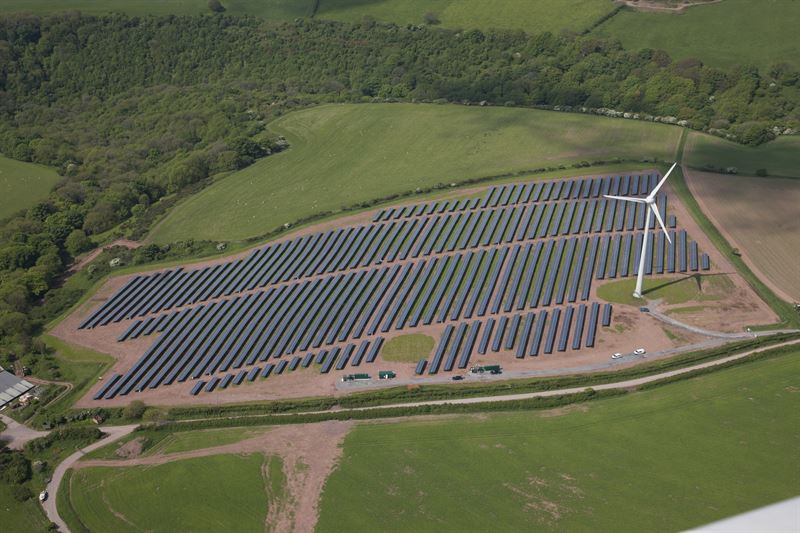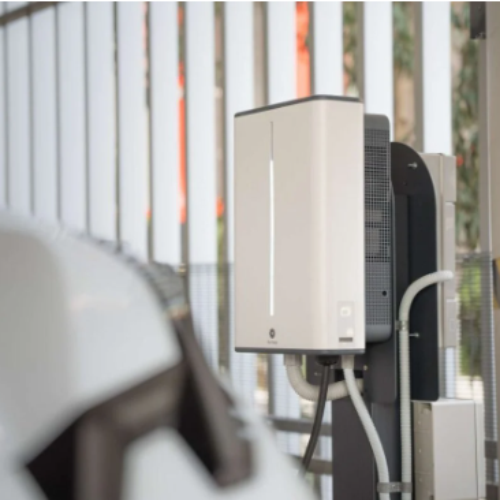Some 960GW of new solar PV and wind capacity must be deployed globally each year by 2030 to be on track to reach net zero by mid-century, according to new analysis from BloombergNEF (BNEF).
Those deployment projections form part of the research organisation’s latest New Energy Outlook report that details three paths (Green, Red and Gray) for the world to achieve net zero while relying on a different mix of technologies.
Alongside the renewables ramp up, the Green scenario, which prioritises clean electricity and green hydrogen, will require the annual addition of 245GWh of batteries and 35 million electric vehicles by 2030, while 70%, or 1,417GW, of global coal-fired capacity will need to be retired.
More than three-quarters of the effort to cut emissions in the next nine years falls to the power sector and to faster deployment of solar and wind, BNEF stated. A further 14% is achieved through increased use of electricity in transport, in heating for buildings and in providing low-temperature heat in industry.
Renewables and electrification “must be accelerated immediately” as they will be the backbone of the transition, according to the report, with the next nine years set to be crucial to getting on track to limit rising temperatures in line with the Paris Climate Agreement.
“If the world is to achieve or get close to meeting net zero by mid-century, then we need to accelerate deployment of the low-carbon solutions we have this decade – that means even more wind, solar, batteries and electric vehicles, as well as heat pumps for buildings, recycling and greater electricity use in industry, and redirecting biofuels to shipping and aviation,” said BNEF chief economist Seb Henbest.
To reach net zero, global energy-related emissions need to drop 30% below 2019 levels by 2030 and 75% by 2040, implying a 3.2% reduction annually by the end of this decade. While the UK has committed to a 78% emissions reduction by 2035 and has brought forward the ban on the use of unabated coal, some energy professionals believe the country will fall short of its 2050 net zero target.
Emissions reductions in the global power sector are set to be driven mainly by solar and wind, which provide between 59% and 65% of the cuts in BNEF’s scenarios. Within the Green scenario, this means that an average of around 1.4TW of renewables will need to be added per year by 2050, when as much as 20TW of solar and 25TW of wind will be installed.
Electrification will play a large role: across all scenarios, the use of electricity in industry, transport and buildings raises its share of total final energy to just below 50% in 2050, up from 19% today.
The energy transition will also require infrastructure investments to shift away from fossil fuels towards clean power. Annual investment in energy supply and infrastructure will need to rise from around US$1.7 trillion per year today to between US$3.1 trillion and US$5.8 trillion on average over the next three decades.
“The capital expenditures needed to achieve net zero will create enormous opportunities for investors, financial institutions and the private sector, while creating many new jobs in the green economy,” said Jon Moore, CEO of BNEF.
In the two other routes to net zero, the Red scenario prioritises nuclear for hydrogen production and will see nuclear fuel make up two-thirds of primary energy in 2050, compared to 5% now. Under the Gray path, carbon capture and storage means coal and gas continue to be used, meaning fossil fuels decline just 2% a year to 52% of primary energy supply in 2050, with solar PV and wind growing to 26%.






